
|

|
Total Lunar Eclipse
|
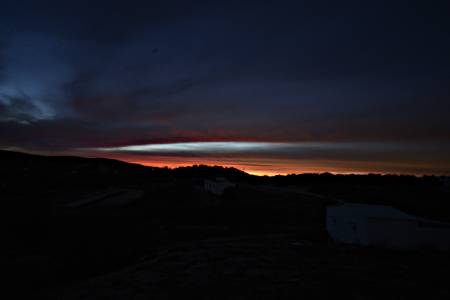
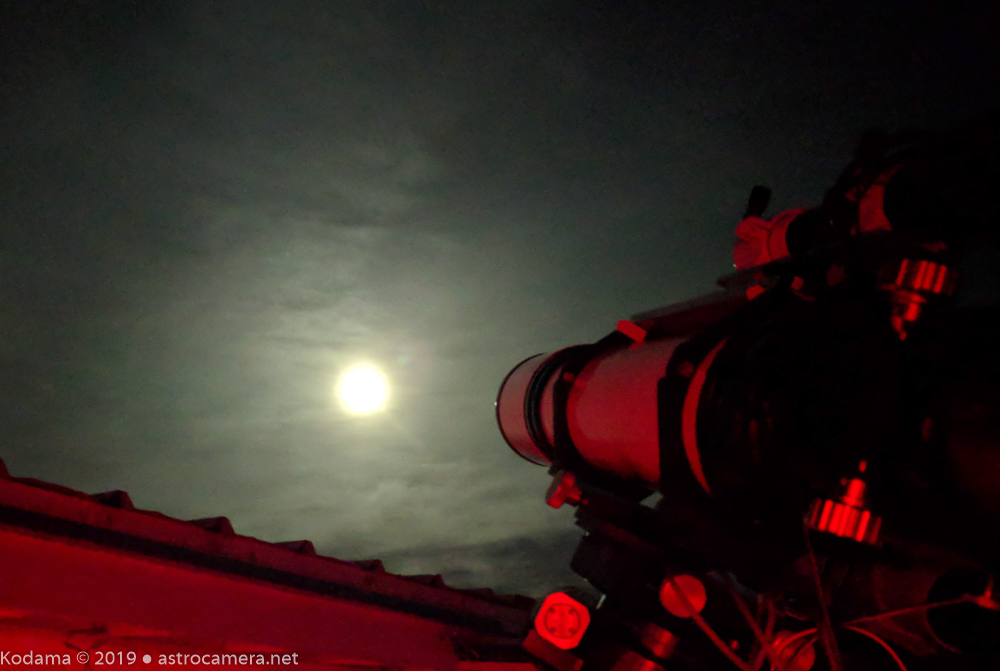
The evening was looking bad at sunset (above left) and after moonrise (above right). I began to wonder if I had made a mistake making the 2 hour drive out to my observatory...
But luckily, as the early evening eclipse progressed, the clouds did yield enough breaks to see the eclipse and even allow the stars to be seen at mid-eclipse, though a high haze still made photography a problem. To see what the entire sky looked like during the eclipse see the 360° panorama.
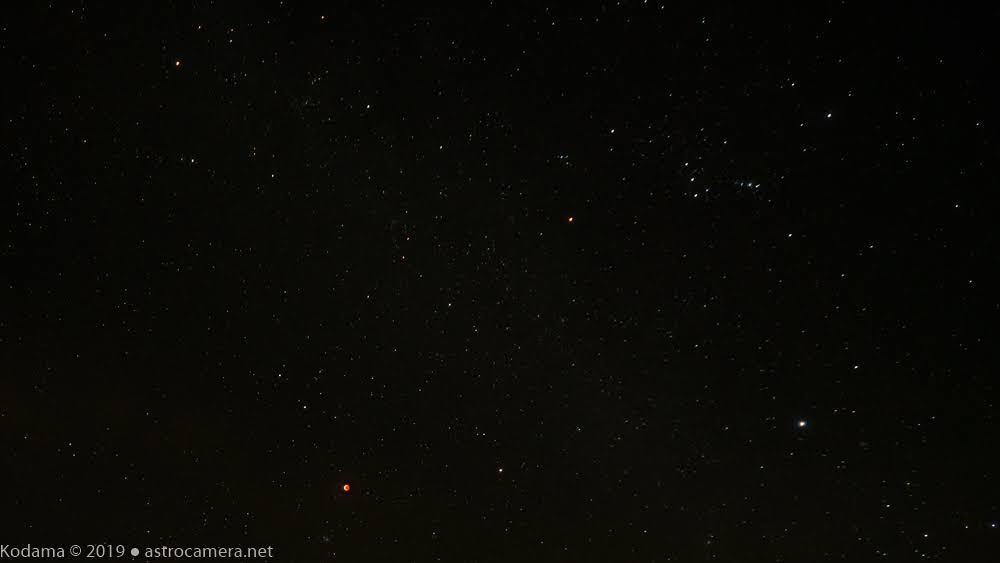
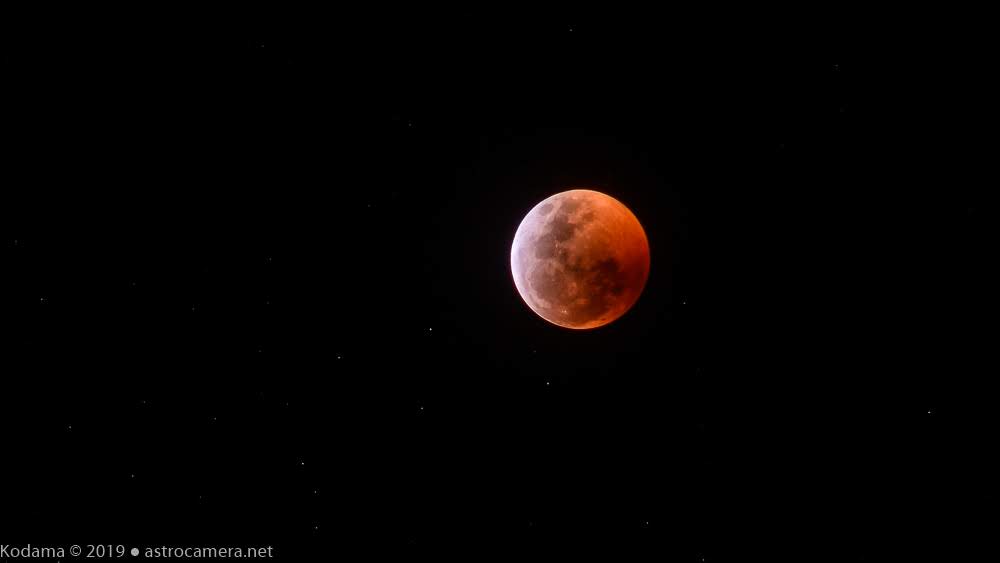
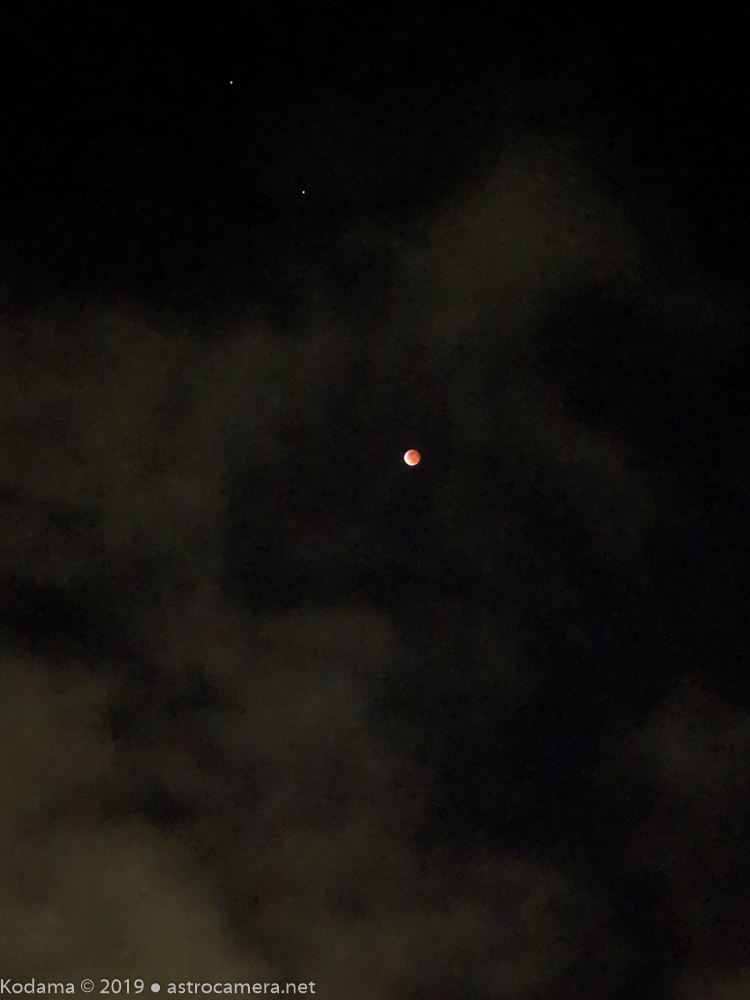
The shot at right was taken by Jean, who watched the eclipse from our home in Cerritos. The quality of this
hand-held, Pixel 3 cell phone shot shows how well Google's image processing handles low-light photos. The
photo shown is straight from the cell phone (no post-processing), except for a reduction in size. Note that
even the stars Castor and Pollux in Gemini were captured.
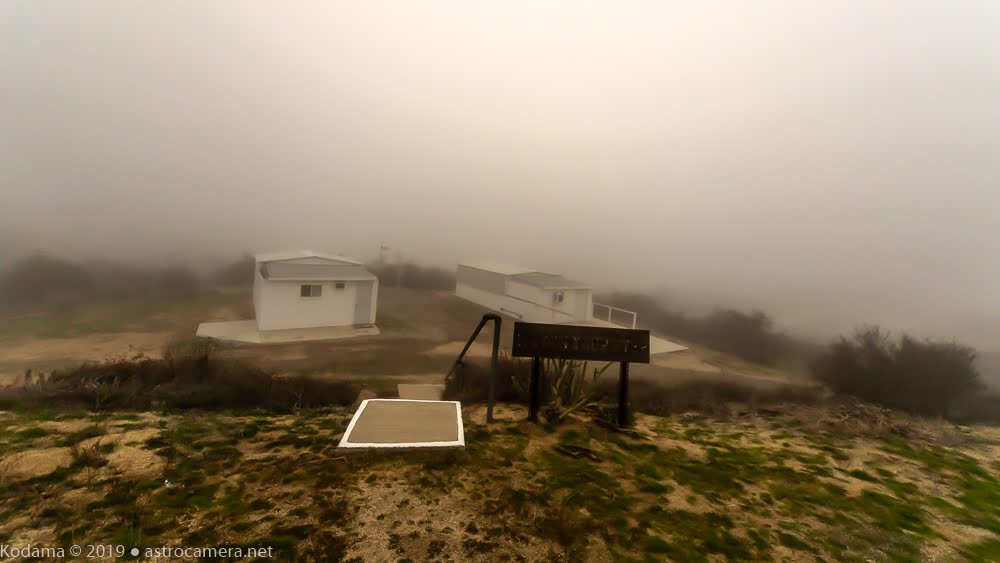
This photo above was taken just before midnight by moonlight after the full moon had re-emerged from the Earth's shadow (8-sec. exposure).